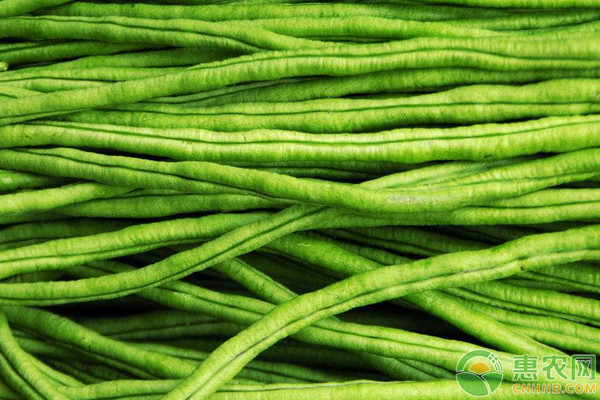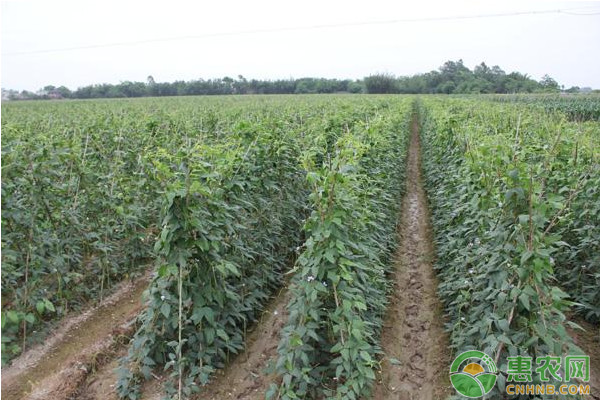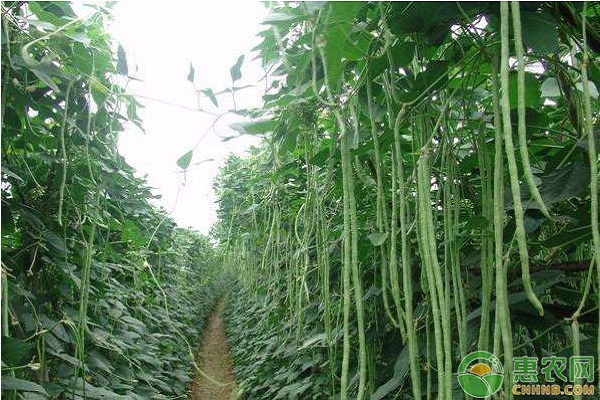Kidney beans are warm, drought-tolerant, but not resistant. Usually, the peas are used to grow the cowpea planting mode. The average yield per mu can reach 3,148 kilograms, and the average output value per mu is 3,148 yuan. According to the average input cost per mu of 1800.8 yuan, the average yield per mu is 1,347 yuan. 1 variety selection Choose excellent varieties with strong stems, strong heat resistance, early maturity, high yield and strong adaptability. The purity of the seeds is not less than 95%, the germination rate is not less than 90%, and it is selected, and the seeds are to be sun-breeded before sowing. If necessary, the seeds can be mixed with 50% of the seeds, and the dosage is 0.2. %. 1.1 sowing It is generally divided into two methods: direct seeding and seedling transplanting. The planting period of small arch shed is in late March, the transplanting time of open field seedlings is late March, and the live broadcast time of open field is mid-April. The local temperature reaches 12~14°C, and it can be broadcast live on sunny days. Before planting, make a small sorghum, the ditch depth is 25cm, the ditch width is 40cm, the squat width is 70cm, then the mulch is laid, and two rows of cowpeas are sown on both sides of the ditch wall. Plant spacing is 22cm, sowing depth is 3~4cm, 3~4 seeds per hole, 2.5~3kg per mu, and diammonium carbonate is used as seed fertilizer when planting. 2 Site preparation In the end of March, depending on the soil moisture, 2 tons of high-quality decomposed farmyard manure and 20-30 kg of superphosphate were applied per acre. The depth of the ploughing is 20cm, and the quality of the land preparation is level and no residue, and it is to be broadcast. 3 Field management In the event of heavy rain after the live seedlings are in progress, the seedlings will be sealed in time to break the knot. If the seedlings are transplanted, the acupuncture points are generally planted before the fourth pair of true leaves are unfolded. After planting, the water is poured and the wells are filled. The cowpea belongs to the fertile water crop, and the nitrogen fertilizer should be applied less in the early stage; Irrigation uses a small number of times to prevent the occurrence of rotten roots, falling leaves, falling flowers and so on. The cowpea seedlings and the vine season are generally applied with urea 1 or 2 times, each time 5 kg/mu. At the initial flowering stage, the urea is applied 5~10kg/mu, and the potassium dihydrogen phosphate is 2kg/mu. During the harvest period, urea should be applied 1 to 2 kg/mu every 4 to 5 days. 3.1 Pruning When the side branches below the first inflorescence grow to 3 cm, the main stems are thickened, and the lateral branches above the first inflorescence are left with 1 to 2 leaves. When the main vine reaches the roof, the item is topped to control the growth, and the lower side branches are formed to form flower buds. 3.2 Harvest Cowpea is a raceme, each flower has 2 to 5 pairs of flowers, usually only a pair of pods, with sufficient fertilizer, good management, and all plants can grow pods when the plants grow vigorously. After the first pair of pods are harvested, the second pair of flower buds are fruited or developed. After 10 to 12 days after flowering, the pods are full, and the seeds can be harvested manually when the seeds are not visible. In the early stage of picking, they are picked every 4 to 5 days. 4 Pest control The main diseases of cowpea are rust, leaf spot, and root rot. Rust and leaf spot disease: In the early stage of the disease, timely remove the diseased leaves, reduce the spread of the disease, and spray the drug as soon as possible. The main agent is 50% carbendazim 500 times solution, or 75% chlorothalonil 600 times solution for spray control, sprayed to the leaf surface back all wet, sprayed once every 7 to 10 days, continuous spraying 2 to 3 times. It can also be used to prevent rust from triadimefon and to control leaf spot disease with methyl thiophanate. Root rot: Control root rot with carbendazim, diclosan, and bactericidal king. Cowpea pods: After entering the flowering period, when the petals are opened at 7 to 9 in the morning, the flowers are aligned, and 50% of the killing pine 1000 times liquid is sprayed in time, sprayed once every 5 days, and the fallen flowers in the field are picked up at the same time. It is also possible to align the plants with spray after 5 o'clock in the evening. Aphids: Spraying acetamiprid can be sprayed and controlled, sprayed on the back of the leaf surface, and sprayed once every 7 days, continuously spraying 2-3 times. Underground pests: Spray with 50% octylphosphorus sulfur 1000 times to control underground pests such as tigers. The above is the whole content of the cultivation technology of cowpea open field. Welcome everyone to continue to pay attention to Huinong.com to learn more about Sannong Information and learn more about agricultural planting technology! Gigas Squid,Squid Ring Skin Off,Fresh Caught Squid,White Fresh Gigas Squid Zhejiang Zhoushan Jiaze Aquatic Co., Ltd. , https://www.tianjia-aquatics.com


Key points of high quality and high yield open field cultivation techniques of cowpea
Next Article
Summer radish sprouts, Dingmiao